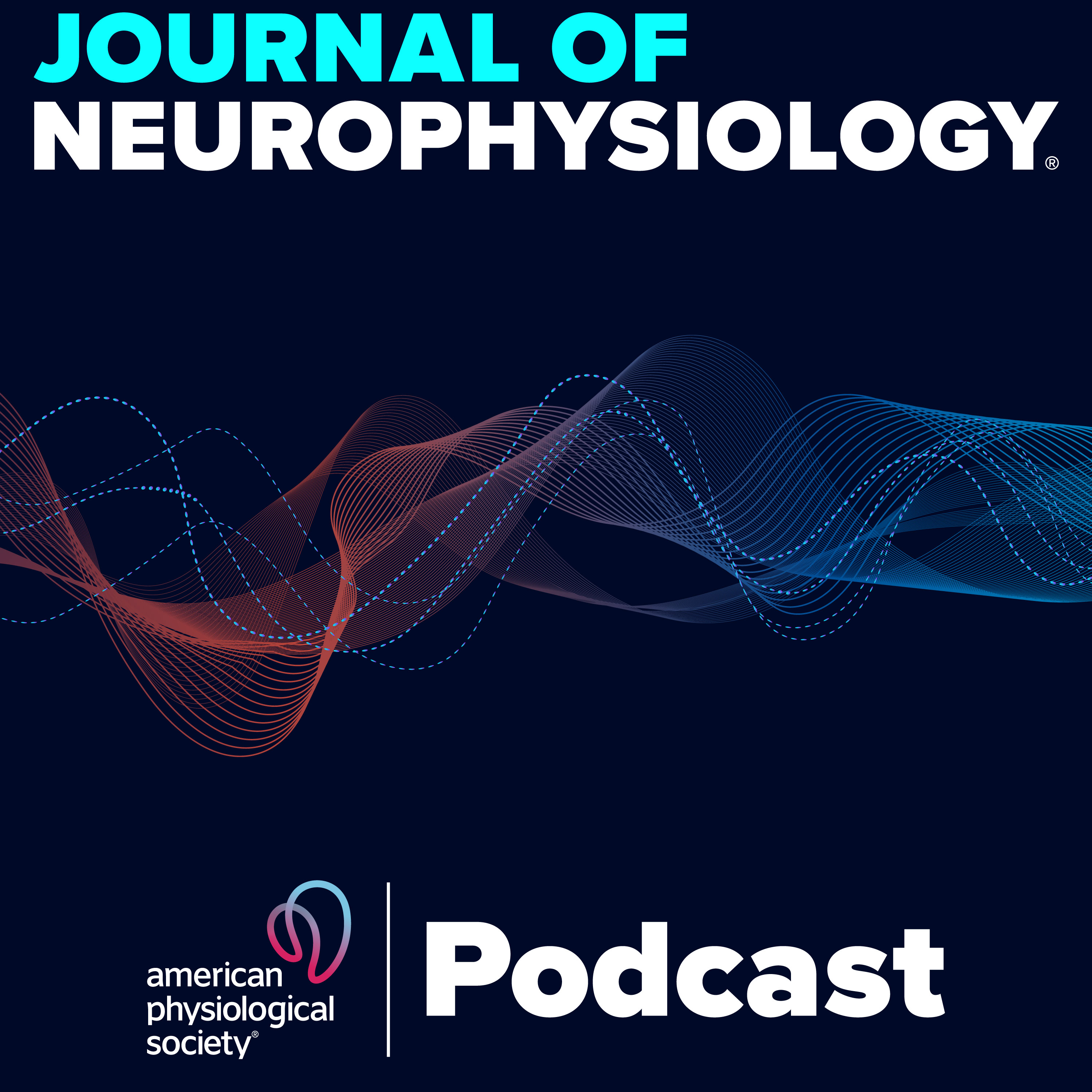Episodes
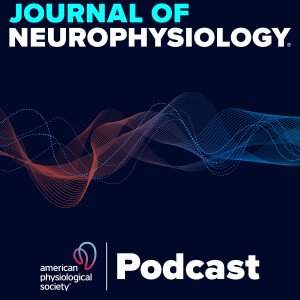
Friday Nov 01, 2024
Friday Nov 01, 2024
In this episode of the JNP Micro Podcast series, coauthor Yiwei D. Gong sheds light on their Editorial Focus regarding the research titled "Dorsomedial Hypothalamus-Raphe Pallidus-Cardiac Sympathetic Pathway Mediates Electroacupuncture Intervention of Stress-Induced Tachycardia" by Wang et al. This important study addresses the management of chronic stress—an area with significant treatment gaps that can contribute to tachycardia. Yiwei discusses how lifestyle therapies like meditation, physical activity, and neurostimulation through electroacupuncture can help manage prodromal symptoms and reduce elevated sympathetic tone. By confirming the effects of electroacupuncture on heart rate in humans, this research holds potential clinical relevance for preventing chronic tachycardia, which could ultimately impact conditions like dilated cardiomyopathy.
Journal of Neurophysiology 2024 131:5, 945-947
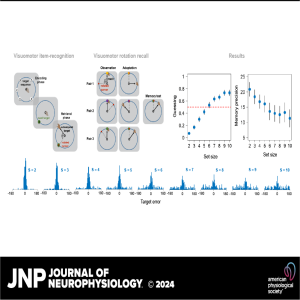
Monday Oct 14, 2024
Monday Oct 14, 2024
Join coauthor Carlos A. Velázquez-Vargas in this insightful episode as he delves into the research titled "Working Memory Constraints for Visuomotor Retrieval Strategies." Discover how humans adapt to feedback perturbations in various visuomotor rotation tasks by tapping into their working memory for successful solutions. Carlos explains the use of a Bayesian latent-mixture model to uncover the impact of guessing and low-precision memories on performance as the number of memorized solutions increases. Tune in to learn how extended practice can help overcome these constraints by enhancing long-term memory retrieval, paving the way for improved visuomotor skills.
Journal of Neurophysiology 2024 132:2, 347-361
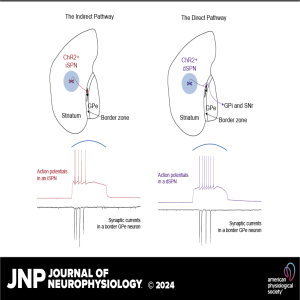
Friday Sep 27, 2024
JNP Micro Podcasts: Striatopallidal synaptic currents
Friday Sep 27, 2024
Friday Sep 27, 2024
In this episode, coauthor James A. Jones dives into the study titled "Comparison of unitary synaptic currents generated by indirect and direct pathway neurons of the mouse striatum." This research is notable as it’s the first to examine synaptic currents from single identified direct and indirect pathway striatal neurons targeting individual globus pallidus externus (GPe) neurons.
Jones highlights how each GPe neuron integrates inputs from both pathways, revealing that while most striatal neurons generate relatively small synaptic currents, a subset is powerful enough to make a significant impact on GPe activity. This finding underscores the collective influence of striatal neurons and raises intriguing questions about the dynamics of synaptic transmission in basal ganglia circuits. The implications for understanding movement and behavioral control are profound, making this study a crucial addition to the field.
Article Citation:
Journal of Neurophysiology 2024 131:5, 914-936
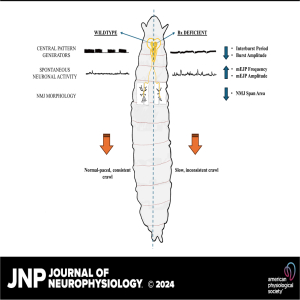
Friday Sep 20, 2024
JNP Micro Podcasts: Beadex is required in Neurons
Friday Sep 20, 2024
Friday Sep 20, 2024
In this podcast coauthor Kripa Chitre discusses the recently published article titled "Beadex, the Drosophila LIM only protein, is required for the growth of the larval neuromuscular junction." A novel role for Beadex (Bx) regulates the larval neuromuscular junction (NMJ) structure and function in a tissue-specific manner. Bx is expressed in a subset of Toll-6-expressing neurons and is involved in regulating synaptic span and physiology, possibly through its negative interaction with Highwire (Hiw). The findings of this study provide insights into the molecular mechanisms underlying NMJ development and function and warrant further investigation to understand the role of Bx in these processes fully.
Journal of Neurophysiology 2024 132:2, 418-432

Friday Sep 13, 2024
JNP Micro Podcasts: Rejuvenating silicon probes for acute neurophysiology
Friday Sep 13, 2024
Friday Sep 13, 2024
In this podcast, coauthor Alden Shoup dives into the methods and resources outlined in their paper "Rejuvenating silicon probes for acute neurophysiology." Discover how they are tackling the issue of degraded probe performance and providing a solution to extend their lifespan.
Article Citation:
Journal of Neurophysiology 2024 132:1, 308-315
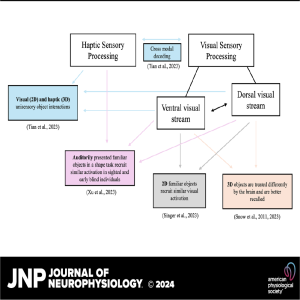
Friday Sep 06, 2024
Friday Sep 06, 2024
In this podcast, author Hellen Kyler delves into her mini-review article on the multisensory and multidimensional nature of object representation. Explore the fascinating findings from fMRI experiments and the impact of 2-D vs. 3-D objects on neural activation and behavior.
Article Citation:
Journal of Neurophysiology 2024 132:1, 130-133
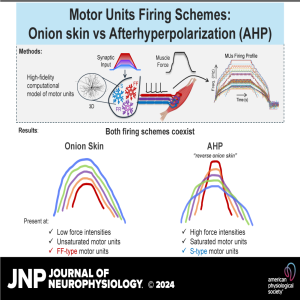
Friday Aug 23, 2024
JNP Micro Podcast: Onion Skin or AHP firing scheme?
Friday Aug 23, 2024
Friday Aug 23, 2024
In this podcast, coauthor Mohamed H. Mousa highlights the newly published research titled "Onion skin is not a universal firing pattern for spinal motoneurons: simulation study." The study reports two contrasting schemes, namely the "onion skin" and the "AHP" regarding the relationship between MUs firing rates and recruitment order. Previous studies have examined these schemes phenomenologically, imposing one scheme on the firing-recruitment relationship. Here, the authors employed a high-fidelity computational model that prioritizes biological fidelity and heterogeneity to investigate motoneuron firing schemes without bias towards either scheme. Their objective findings offer an explanation for the longstanding dichotomy on MU firing patterns.
Article Citation:
Journal of Neurophysiology 2024 132:1, 240-258

Thursday May 23, 2024
JNP Micro Podcast: Switching Neuron Contributions to Second Network
Thursday May 23, 2024
Thursday May 23, 2024
In this episode, coauthor Savanna-Rae H. Fahoum dives into her recent research, shedding light on "Switching Neuron Contributions to Second Network Activity" and "Neuropeptide Modulation of Bidirectional Internetwork Synapses." Collaborating with Dawn M. Blitz, they utilize rhythmic neuronal networks in crabs as a model to explore the complex interactions between these networks and neurons capable of switching their network participation. Their findings reveal that when a neuron transitions into dual-network activity, only the second network influences its activity within that context. Furthermore, while the switching neuron can effectively coordinate second network neurons and regulate their activity levels, it's not always indispensable, suggesting a nuanced regulation of switching neurons that challenges the traditional view of them merely as followers in additional networks.
Journal of Neurophysiology 2024 131:2, 417-434
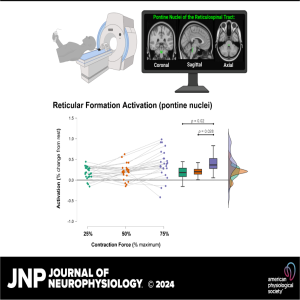
Friday Apr 26, 2024
JNP Micro Podcast: Pontine Reticular Nuclei Scales with Handgrip Force
Friday Apr 26, 2024
Friday Apr 26, 2024
In this episode, Justin W. Andrushko discusses the recently published research titled "Activity in the pontine reticular nuclei scales with handgrip force in humans." In this study, the authors used a task-based functional magnetic resonance imaging (fMRI) paradigm to show that activity in the pontine reticular nuclei scales linearly with increasing force during a handgrip task. These findings directly support recently proposed hypotheses that the reticulospinal tract may play an important role in modulating force production in humans.
Article Citation:
Journal of Neurophysiology 2024 131:5, 807-814
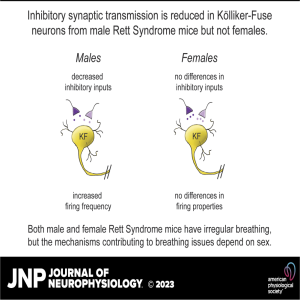
Monday Mar 11, 2024
Monday Mar 11, 2024
In this episode of JNP's micro podcasts, Jessica R. Whitaker-Fornek of the University of Michigan Medical School discusses the recently published research titled "Inhibitory synaptic transmission is impaired in the Kölliker-Fuse of male, but not female, Rett syndrome mice."
NEW & NOTEWORTHY Kölliker-Fuse (KF) neurons in acute brain slices from male Rett syndrome (RTT) mice receive reduced inhibitory synaptic inputs compared with wild-type littermates. In female RTT mice, inhibitory transmission was not different in KF neurons compared with controls. The results from this study show that sex-specific alterations in synaptic transmission occur in the KF of RTT mice.
Journal of Neurophysiology 2023 130:6, 1578-1587

